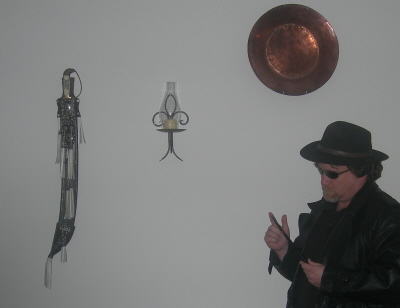|
About This Author
Come closer.
|
Carrion Luggage
Carrion Luggage
![Traveling Vulture [#2336297]
Blog header image](http://www.InkSpot.Com/main/trans.gif) ![Traveling Vulture [#2336297]
Blog header image Blog header image](/main/images/action/display/ver/1741870325/item_id/2336297.jpg)
Native to the Americas, the turkey vulture (Cathartes aura) travels widely in search of sustenance. While usually foraging alone, it relies on other individuals of its species for companionship and mutual protection. Sometimes misunderstood, sometimes feared, sometimes shunned, it nevertheless performs an important role in the ecosystem.
This scavenger bird is a marvel of efficiency. Rather than expend energy flapping its wings, it instead locates uplifting columns of air, and spirals within them in order to glide to greater heights. This behavior has been mistaken for opportunism, interpreted as if it is circling doomed terrestrial animals destined to be its next meal. In truth, the vulture takes advantage of these thermals to gain the altitude needed glide longer distances, flying not out of necessity, but for the joy of it.
It also avoids the exertion necessary to capture live prey, preferring instead to feast upon that which is already dead. In this behavior, it resembles many humans.
It is not what most of us would consider to be a pretty bird. While its habits are often off-putting, or even disgusting, to members of more fastidious species, the turkey vulture helps to keep the environment from being clogged with detritus. Hence its Latin binomial, which translates to English as "golden purifier."
I rarely know where the winds will take me next, or what I might find there. The journey is the destination.
November 9, 2025 at 10:38am November 9, 2025 at 10:38am
| |
We knew the Maya had a good thing going for a while there, but this bit from LiveScience was news to me:
Mostly, I'm sharing this because I think it's cool. Whether the archaeologists are entirely correct or not about the site's origins and purpose, I don't know. And, you know, feel free to make Indiana Jones jokes if you want; I'm going to try to avoid them here.
A 3,000-year-old Maya site is actually a giant, city-size map depicting the "order of the universe," researchers say.
If they were anything like other humans (and, being humans, they were), the Maya probably considered themselves at or near the top of the "order of the universe." But that's just me being cynical about human nature.
The site, known as Aguada Fénix, is the "oldest and largest monumental architecture in the Maya area" and is larger than many ancient cities in Mesoamerica, the researchers wrote in the study.
I'm skeptical about "oldest and largest," but perhaps they mean "the oldest and largest that we've rediscovered."
In effect, building Aguada Fénix may have been a celebrated communal activity for ancient people, just like Stonehenge likely was in prehistoric England.
I have to wonder how much that's backed up by evidence, and how much is wishful thinking or bias on the part of the researchers?
I'm not saying it's wrong. But the postmodern take on things tends to portray ancient cultures in the best possible light relative to modern human morals. I suppose that's a pendulum swing away from how Westerners used to portray those peoples in the worst possible light, emphasizing the human sacrifices and slavery and child labor and all of those things we decry in our own societies.
The truth, I suspect, is somewhere in the middle. Humans, despite differences in culture and time, are capable of great good and great evil, and all the shades between.
Aguada Fénix dates to 1050 B.C., before the Maya's writing system was invented, so there are no written records of the site.
That complicates matters quite a bit, I'd imagine. The Maya still live in the area, but unless they're keeping secrets (always a possibility), any legends from three thousand years ago have been lost or distorted beyond recognition.
Also, I generally trust LiveScience's reporting. But I'm a bit put off by their use of B.C. rather than B.C.E.
They not only excavated Aguada Fénix but also used lidar (light detection and ranging), a technique in which lasers are pulsed out from an aircraft, and the reflected light is then measured and used to create imagery of the landscape.
So, not quite space lasers.
Their analysis showed that the cosmogram was created using a system of structures that include canals, causeways and a dam. These structures crisscross each other to create a series of cross shapes.
I don't want to imagine how certain groups will interpret that.
At the center of the structure is a series of small buildings and platforms, which archaeologists call "E group." It has several buried deposits that contained objects that likely had a ceremonial meaning, including greenstone ornaments that may represent a crocodile, a bird and possibly a female giving birth; ceramic vessels; and pigments.
It seems to me that when an archaeologist says something has "ceremonial purpose," what they mean is "it seems to serve no practical function, so we're going to guess it's got ritual meaning."
They've never heard of art for the sake of art? It's like if some future archaeologist dug up your house, found your Funko Pop! collection, and airily proclaimed that our culture worshiped big-headed idols.
I mean, it's not that far from the truth, but we don't see it that way. At least, most of us don't. I have my doubts about some people.
The researchers noted they did not find any signs of social hierarchy at Aguada Fénix — unlike at other, later Maya sites such as Tikal in Guatemala and Copan in Honduras that have evidence of the Maya's strict social structure.
Which of course reminded me of this:
I told you. We’re an anarcho-syndicalist commune. We take it in turns to act as a sort of executive officer for the week. |
© Copyright 2025 Robert Waltz (UN: cathartes02 at Writing.Com). All rights reserved.
Robert Waltz has granted InkSpot.Com, its affiliates and its syndicates non-exclusive rights to display this work.
|


![Traveling Vulture [#2336297]
Blog header image Blog header image](/main/images/action/display/ver/1741870325/item_id/2336297.jpg)